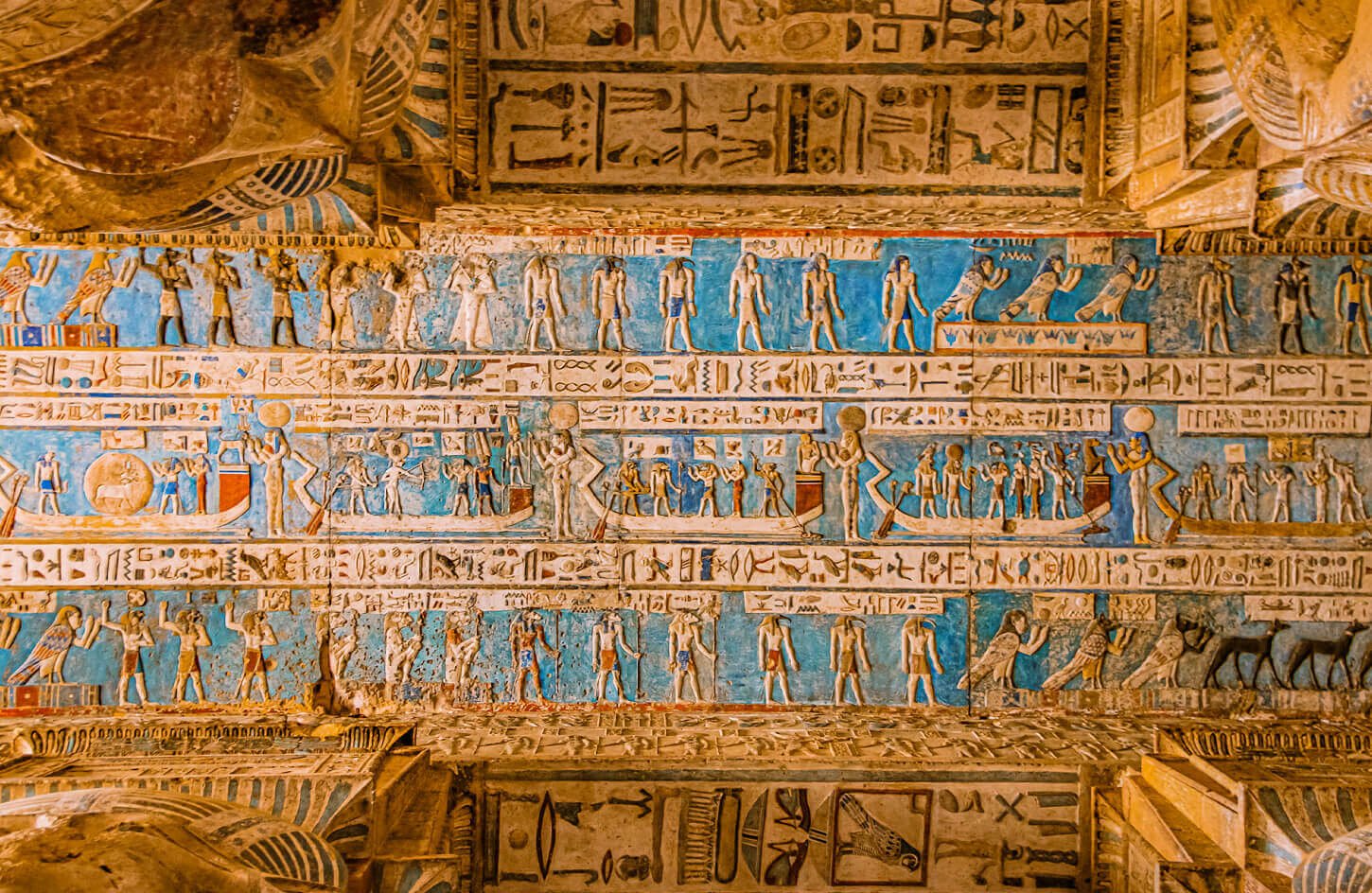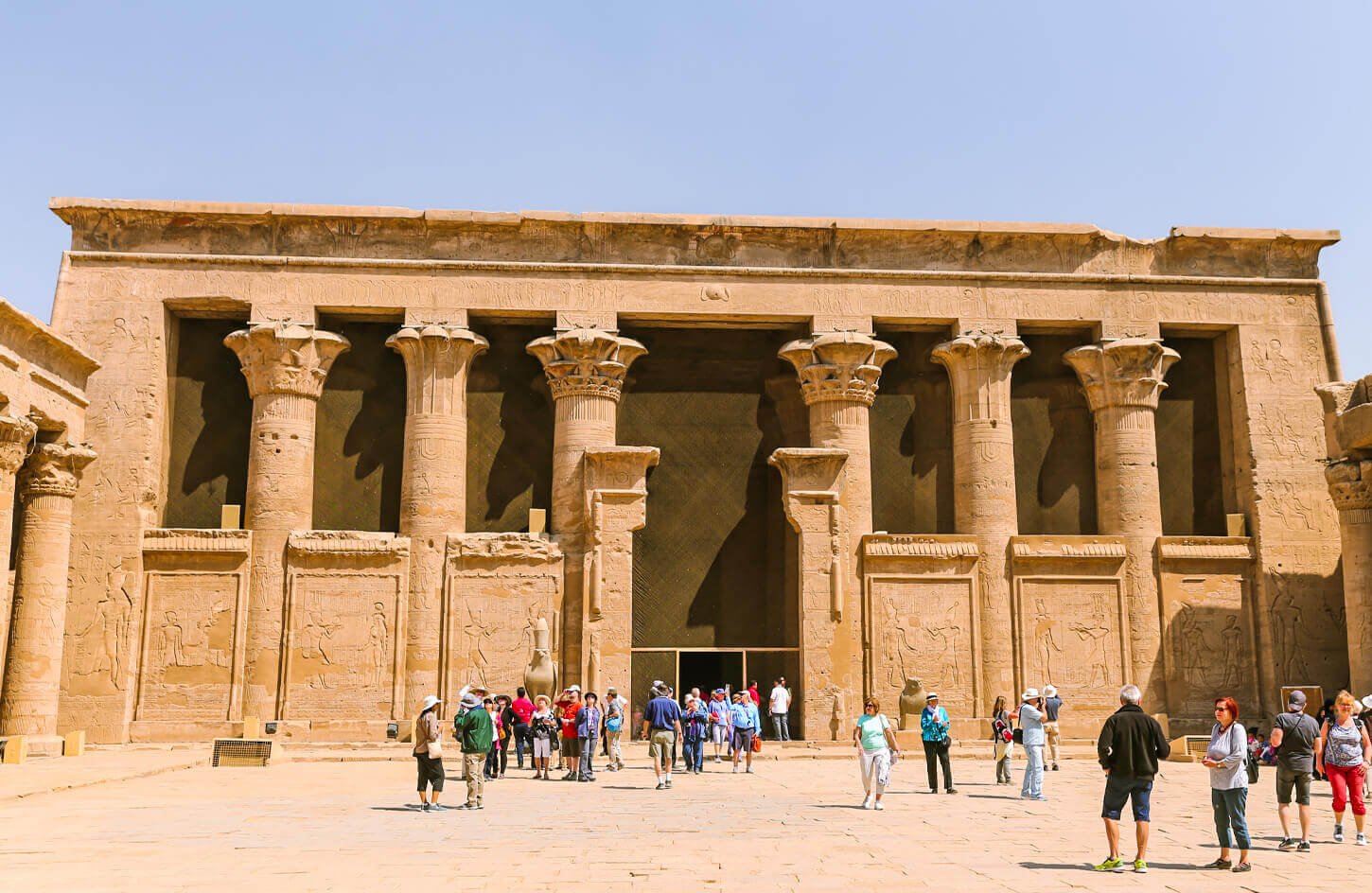Welcome to the captivating world of the Dendera Temple Complex, a remarkable testament to ancient Egypt’s grandeur and spiritual significance. This extraordinary complex, located in the enchanting city of Dendera, holds a treasure trove of architectural wonders and artistic masterpieces.
With a rich historical background and various intriguing features, the Dendera Temple Complex is a captivating destination for history enthusiasts, cultural explorers, and curious minds seeking to unravel the mysteries of ancient Egypt.
Overview of Dendera Temple Complex
Nestled along the fertile banks of the Nile River, the Dendera Temple Complex is an archaeological site encompassing various temples and structures dedicated to the worship of Hathor, the goddess of love, beauty, and motherhood.
This sprawling complex is renowned for its exceptional state of preservation, allowing visitors to immerse themselves in the architectural splendor and religious significance of ancient Egypt.
Situated approximately 60 kilometers north of Luxor, the Temple of Dendera occupies a prominent position within the ancient city of Dendera, which was once an important religious and administrative center. Its strategic location was crucial in establishing trade routes and fostering cultural exchange between Upper and Lower Egypt.

Historical Background
Overview of the Ancient City of Dendera
Dendera flourished during the Old Kingdom and reached its zenith during the Ptolemaic and Roman periods. As a revered religious center, it served as the primary site for the veneration of the goddess Hathor. The city thrived as a hub of religious pilgrimage and hosted numerous festivals and rituals.
Development and Expansion of Dendera Temple
Over the centuries, the Dendera Temple Complex underwent several phases of construction, expansion, and restoration under different rulers, including the Ptolemies and the Romans. Each dynasty left its mark, adding new structures and embellishments while preserving the sacred essence of the temple.
Significance during Different Periods of Ancient Egyptian History
The Temple of Dendera was crucial in ancient Egyptian religious life, attracting pilgrims and worshippers from afar. Throughout its history, the complex witnessed the influence of various religious and cultural movements, reflecting the changing political landscape of Egypt.
Architecture and Design
General Layout and Plan of the Temple Complex
The Dendera Temple Complex spans a vast area and features a meticulously designed layout that embodies the harmony and symbolism inherent in ancient Egyptian architecture. The complex comprises multiple structures and courtyards, each serving a specific purpose within the religious rituals and ceremonies.
Main Structures and Their Purposes
-
The Temple of Hathor: This majestic temple, the complex’s centerpiece, is dedicated to Hathor and features magnificent columns, intricately carved reliefs, and a stunning astronomical ceiling. It served as a place of worship and a sanctuary for divine rituals.
-
The Birth House: Adjacent to the Temple of Hathor, the Birth House is a fascinating structure associated with the mythical birth of the pharaoh, symbolizing the divine lineage of Egyptian rulers.
-
The Sacred Lake: A sacred water feature within the complex, the lake played an essential role in purification rituals and was believed to possess healing properties.
-
The Sanatorium: Situated on the southern side of the complex, the Sanatorium served as a medical facility where pilgrims sought healing through divine intervention and treatments.
-
The Crypts: Hidden beneath the main temple, the crypts housed sacred objects and relics, offering a glimpse into the secretive aspects of ancient Egyptian spirituality.
Decorative Elements and Reliefs
-
Intricate Carvings and Hieroglyphics: The walls and pillars of Dendera Temple are adorned with exquisitely detailed carvings, showcasing mythical scenes, religious ceremonies, and symbolic representations of gods and goddesses. Hieroglyphics provide insights into the religious beliefs and historical events of the time.
-
Depictions of Gods, Pharaohs, and Religious Rituals: The reliefs within the temple complex depict a pantheon of deities, including Hathor, Horus, and Osiris, as well as pharaohs engaged in religious rituals. These artistic representations offer valuable insights into ancient Egypt’s spiritual and cultural practices.

Religious and Ritual Significance
Worship of Hathor and Other Deities
The Dendera Temple Complex was primarily dedicated to worshipping Hathor, the benevolent goddess associated with femininity, joy, and love. Pilgrims flocked to the complex to seek the goddess’s blessings, offer prayers, and participate in rituals celebrating her divine attributes.
Additionally, the complex honored other deities, reflecting the interconnected nature of the ancient Egyptian pantheon.
Rituals and Ceremonies Conducted at the Temple of Dendera
The temple was a sacred space for various religious ceremonies, including processions, offerings, and purification rituals. These rituals were performed by priests and priestesses who maintained the spiritual harmony between the divine and mortal realms.
Festivals and Celebrations Held at the Temple
Dendera Temple Complex hosted numerous festivals and celebrations annually, attracting devotees and spectators across Egypt. These vibrant events, characterized by music, dance, and elaborate rituals, provided an opportunity for communal worship and the expression of devotion to the gods.
Restoration and Preservation Efforts
Historical Restoration Projects
Over the centuries, the Temple of Dendera faced the natural deterioration of its structures. However, numerous restoration efforts have taken place since the early 19th century to preserve its architectural integrity and ensure its cultural legacy endures.
Modern Conservation and Maintenance Initiatives
Today, a combination of archaeologists, conservators, and experts work diligently to maintain and protect the Temple of Dendera. From regular cleaning and monitoring to the use of advanced restoration techniques, these efforts safeguard the invaluable heritage of the site for future generations to appreciate and explore.
Tourism and Cultural Importance
Visitor Experience and Popular Attractions
A visit to the Dendera Temple Complex offers an unforgettable journey through time. Visitors can explore the beautifully preserved structures, immerse themselves in the spiritual ambiance, and marvel at the intricate artistry showcased within the temple walls.
Highlights include the breathtaking Temple of Hathor, the enigmatic Crypts, and the alluring reliefs that depict ancient Egyptian mythology.
Contribution to Egypt’s Tourism Industry
As one of Egypt’s most significant archaeological sites, the Temple of Dendera attracts tourists worldwide. Its cultural and historical importance catalyzes tourism, contributing to the economy and providing employment opportunities for local communities.
Cultural and Educational Value for Visitors
Beyond its tourism appeal, the Dendera Temple Complex offers a unique educational experience. Visitors can gain profound insights into ancient Egyptian religious beliefs, architectural ingenuity, and artistic expression. The complex is an open book, allowing enthusiasts and scholars to delve into the secrets of a bygone era.
Controversies and Debates
Interpretations of Certain Reliefs and Symbols
Like many ancient sites, the Dendera Temple Complex has sparked debates and discussions among historians, Egyptologists, and scholars. Various interpretations of specific reliefs and symbols within the complex continue to fuel intellectual discourse, enriching our understanding of ancient Egyptian culture.
Alternative Theories and Claims Related to Dendera Temple
Throughout history, alternative theories and claims have emerged regarding the purpose and significance of the Dendera Temple Complex. These alternative narratives, often speculative, add an element of intrigue to the site and inspire further exploration and investigation.
In conclusion, the Temple of Dendera stands as an architectural masterpiece and a gateway to the enchanting world of ancient Egypt. Its historical significance, religious importance, and captivating design make it a destination of choice for those seeking a profound connection to the past.
By preserving this remarkable heritage, we invite you to embark on a journey to Dendera, to witness its enduring legacy and gain a deeper appreciation for the rich tapestry of ancient Egyptian history. Explore the wonders of the Temple of Dendera and immerse yourself in a captivating era that has fascinated humanity for millennia.
Related Articles You Might Find Interesting:


0 Comment